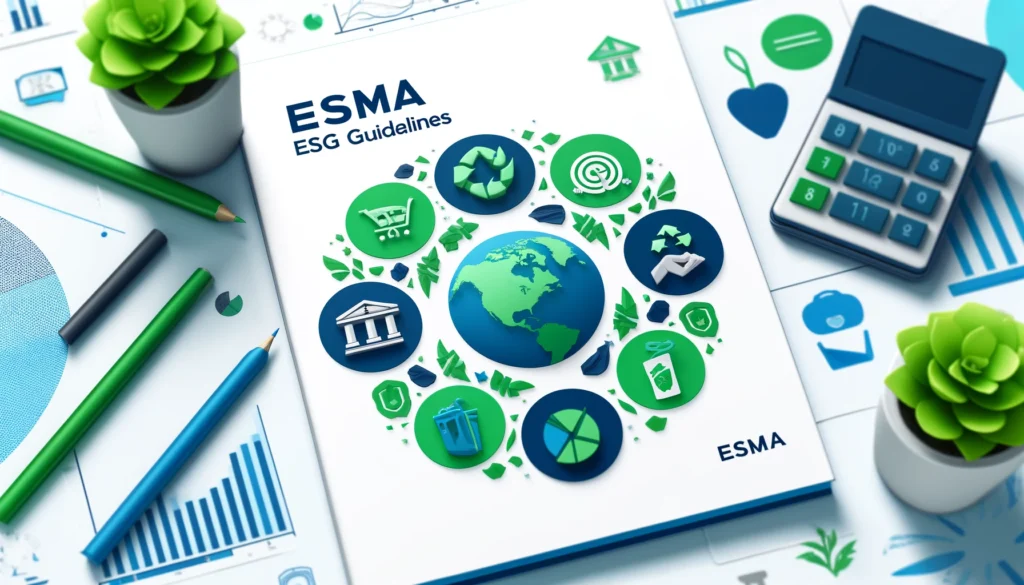ESMA Publishes Final Report on Guidelines for Funds’ Names Using ESG or Sustainability-Related Terms

On May 14, 2024, the European Securities and Markets Authority (ESMA) released its Final Report titled “Guidelines on funds’ names using ESG or sustainability-related terms.” This report follows a consultation period that ran from November 2022 to February 2023, during which ESMA collected feedback from 125 respondents. Initially expected to be published in Q2 or Q3 of 2023, the guidelines experienced some delays. Here, we examine the background, key changes, and future implications of these guidelines.
Background to the Guidelines
The rise in investor demand for funds incorporating Environmental, Social, and Governance (ESG) factors has led to an increase in asset managers using ESG and sustainability-related terms in fund names to attract investments. ESMA’s May 2022 Supervisory Briefing on sustainability risks and disclosures in investment management highlighted concerns over the potential for misleading fund names. Consequently, ESMA was mandated under the Amending Directive to the Alternative Investment Fund Managers Directive (AIFMD) and the Undertakings for the Collective Investment in Transferable Securities Directive (UCITS) to develop guidelines specifying when fund names might be unclear, unfair, or misleading.
Key Changes from the Consultation Paper
In response to the consultation feedback, ESMA has made several significant changes to its initial proposals:
- Removal of the 50% Threshold for Sustainable Investments: Originally, ESMA proposed that funds with “sustainable” in their name should allocate at least 50% of their investments to sustainable investments as defined by the Sustainable Finance Disclosure Regulation (SFDR). This was criticized for being too discretionary. ESMA has removed this threshold, instead requiring a meaningful commitment to sustainable investments for the use of sustainability-related terms.
- Minimum Safeguards Adjustments: The initial proposals included exclusion criteria for Paris-aligned Benchmarks (PAB) for all ESG or sustainability-related terms. Respondents argued this could unfairly penalize transition-focused strategies. ESMA has revised this, providing Climate Transition Benchmark (CTB) exclusions for transition-, social-, and governance-related terms, allowing more flexibility for these strategies.
- New Category for Transition-Related Terms: ESMA introduced a new category for transition-related terms such as “improving”, “progress/ion”, “evolution”, and “transformation”. These terms now only require the application of CTB exclusions, aiming to support investments in companies on a path to transition.
- Impact and Transition Terms: Measurability: Funds using impact-related terms must ensure investments generate positive, measurable social or environmental impact. Transition-related terms must demonstrate a clear and measurable path to transition.
- Transitional Period: Despite some opposition, ESMA has maintained a six-month transitional period for existing funds to comply with the new guidelines. The guidelines will apply three months after their publication in translation on ESMA’s website.
Next Steps
The guidelines will be translated into the EU’s official languages and published on ESMA’s website, triggering a two-month period for National Competent Authorities (NCAs) to confirm compliance. The guidelines will take effect three months post-publication, with a six-month compliance window for pre-existing funds.
ESMA’s guidelines under the AIFMD and UCITS Directive extend beyond sustainability-related names, and broader guidelines may be developed following further consultation. Additionally, ESMA plans to review the guidelines in case of legislative updates.
Conclusion
The new ESMA guidelines represent a significant step in ensuring transparency and accuracy in fund naming, aiming to prevent misleading ESG and sustainability claims. These changes reflect a balance between regulatory rigor and the practical concerns of asset managers, fostering trust and clarity for investors in the growing ESG market.
Interested in speaking with our consultants? Click here to get in touch
Some sections of this article were crafted using artificial intelligence technology
